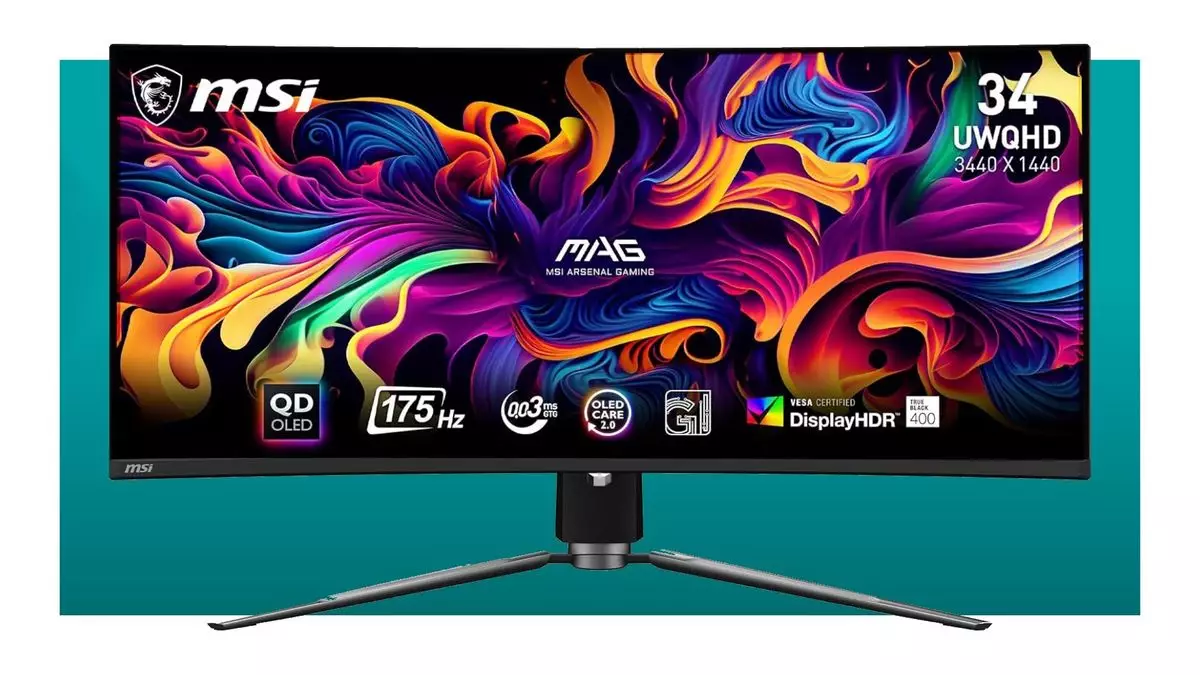In the world of monitors, the choice between a 32-inch 4K display and a 34-inch ultrawide is a debate that brings out sharp opinions from both gamers and professionals alike. As the technology in monitor designs advances, consumers are often left pondering which type of display will best suit their needs, be it for gaming, multimedia editing, or day-to-day tasks. In this article, we will delve into the key differences between these two prominent options, spotlighting the MSI MAG 341CQP and its merits as an ultrawide contender, while weighing the advantages and disadvantages of each format.
When comparing a 32-inch 4K monitor, such as the MSI MAG 321UP, to a 34-inch ultrawide display, we first need to discuss their specifications. The term ‘4K’ refers to a resolution of 3840 x 2160 pixels, resulting in a pixel density that is lauded for its detail and clarity. However, while the high pixel density translates into stunning visual output for non-gaming uses, it comes with a cost: a steep demand on graphics processing units (GPUs). For users to fully leverage the capabilities of a 4K display, they often find themselves needing high-end, costly components, potentially pushing system costs beyond $1,700 due to the required GPU upgrades.
Conversely, the 34-inch ultrawide, like the MSI MAG 341CQP, features a resolution of 3440 x 1440 pixels. While it provides a significant reduction in pixel count compared to its 4K counterpart, the experience can be equally or more immersive—especially in a gaming context—digital environments tend to benefit from the curved, expansive field of view that an ultrawide monitor provides. The added real estate of an ultrawide screen allows users to manage multiple applications conveniently, catering to productivity needs as well.
When it comes to the subjective experience of using these two formats, preferences can vary widely. The 32-inch 4K display delivers unparalleled detail, making it a stellar choice for applications requiring precise image fidelity—such as video editing, photography, or graphic design. The crisp quality of a 4K display can transform how users experience visual content, providing vibrant detail that makes colors pop and textures stand out.
On the flip side, the 34-inch ultrawide brings a unique sense of immersion to gaming. With a refresh rate of 175 Hz, it strikes a balance between smooth performance and capability, presenting a gaming experience that envelops players in their environment. The curvature of the ultrawide screen wraps around the user, amplifying the sense of presence in virtual worlds, especially in first-person shooters and expansive RPGs.
One of the most practical considerations in this debate is initial and long-term investment. As mentioned earlier, an MSI 32-inch 4K panel can be found for $800, which may seem attractive at first glance. However, the necessity for a high-performance GPU, which could average between $900 and $1,000, escalates the total investment considerably, leaving potential buyers with $1,700 or more in expenses. Comparatively, a 34-inch ultrawide, priced at around $680, offers a far more budget-friendly option when combined with a mid-range GPU—around $600 for models like the Nvidia RTX 4070 Super.
Moreover, the longevity of OLED technology raises legitimate concerns. While current models demonstrate resistance to burn-in, history has taught us to be cautious. The MSI MAG 341CQP is backed by three years of burn-in coverage; thus, users hoping to maintain usage beyond that period need to weigh the risks. For those who tend to upgrade their monitors every few years, the 34-inch ultrawide presents itself as a less intimidating option.
Ultimately, the choice between a 32-inch 4K monitor and a 34-inch ultrawide display should be driven primarily by individual needs and preferences. Whether your focus lies in pixel-perfect detail for design work or an immersive gaming experience, both options bring their strengths to the table. In this evolving landscape of display technology, the MSI MAG 341CQP emerges as a compelling choice for enthusiasts yearning for an ultrawide gaming experience that marries affordability with performance. As the debate continues, prospective buyers are encouraged to assess their specific requirements thoroughly before making a decision.

